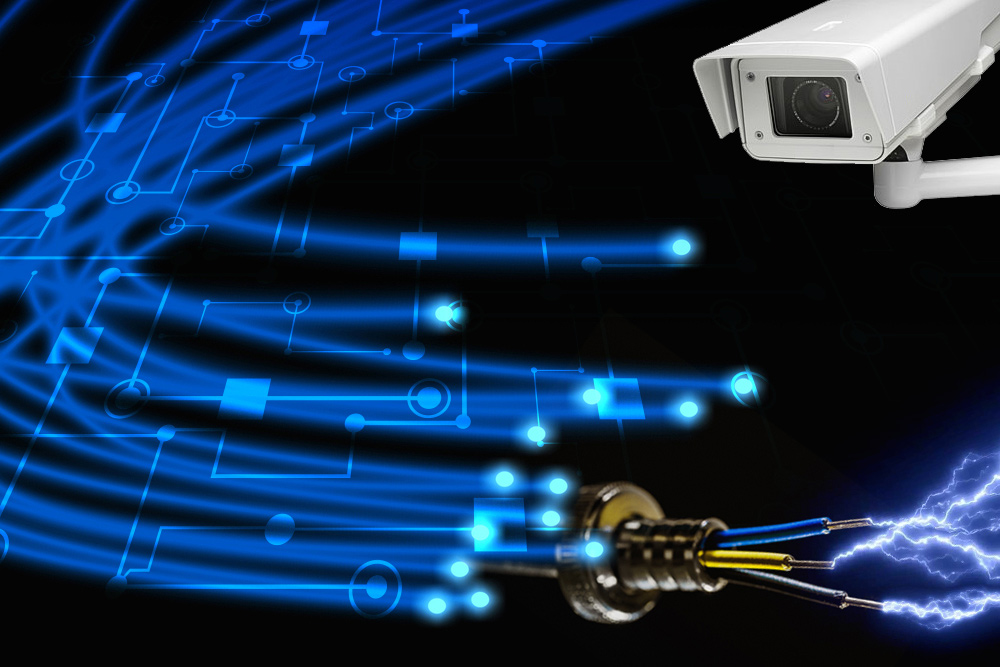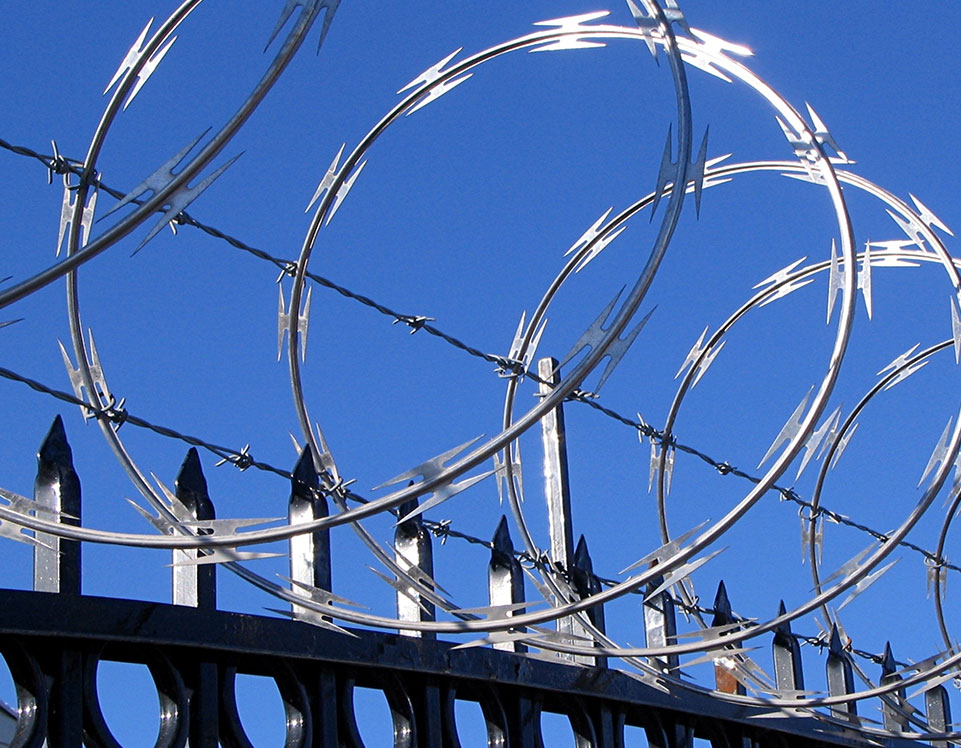How Security Fibers Are Used to Enhance the Efficiency of Security Surveillance Systems
How Security Fibers Are Used to Enhance the Efficiency of Security Surveillance Systems
Blog Article
Why Fiber Optic Security Systems Are the Future of Protection
The transition to fiber optic safety systems notes a substantial advancement in the world of defense, driven by their extraordinary data transmission capabilities and strength to exterior disturbances. As the landscape of protection develops alongside emerging technologies such as AI and IoT, the potential for fiber optics to enhance and redefine safety and security frameworks comes to be significantly apparent.
Advantages of Fiber Optic Systems
Among the main advantages of fiber optic systems is their exceptional bandwidth ability, which promotes the transmission of big volumes of information over cross countries without substantial loss. This particular is especially beneficial for safety applications that need the continuous surveillance and transfer of high-definition video clip feeds, sensor data, and various other essential information. Optical fiber can fit the growing needs of modern security systems, guaranteeing that information stays intact and trusted.
Furthermore, fiber optic cords are less prone to electro-magnetic interference, which can be a considerable problem in settings with various digital gadgets. This resistance improves the integrity of the data being transferred, thus minimizing the threat of information breaches or system failings. Fiber optic systems are naturally extra protected than typical copper wires, as touching right into a fiber optic line without discovery is exceptionally challenging.
The resilience of fiber optic cables also adds to their appeal. They are resistant to environmental variables such as wetness and temperature variations, reducing upkeep expenses and raising system longevity. Overall, these advantages setting fiber optic systems as a durable and effective selection for modern protection facilities, making certain dependable and protected data transmission.
Improved Information Transmission Speed

The capacity to transmit huge quantities of information promptly facilitates the seamless integration of high-definition video clip feeds and progressed analytics. Security systems can now process and analyze information in real-time, improving action times and situational recognition. In addition, fiber optic links sustain longer transmission ranges without destruction of signal top quality, making them perfect for extensive safety networks.
The raised rate of fiber optic systems not only improves the performance of protection operations but also reduces latency. This is particularly essential in crucial scenarios where prompt decision-making can protect against security violations or mitigate possible dangers. As companies remain to prioritize safety and security and efficiency, the demand for quick and trusted information transmission will undoubtedly strengthen fiber optic systems as a foundation of modern safety facilities.
Resistance to Interference
Fiber optic security systems constantly demonstrate remarkable resistance to electro-magnetic disturbance, an important advantage in environments prone to digital sound. Unlike traditional copper cable televisions, which can be negatively affected by magnetic fields, radio regularity disturbance, and other kinds of electric disruption, fiber optic cords utilize light to send information. This intrinsic building makes sure that the signals continue to be clear and unaltered, no matter surrounding electronic task.
Making use of glass or plastic fibers in fiber optic modern technology produces a barrier versus disturbance, enabling dependable data transmission even in tough circumstances such as industrial facilities, city locations with high digital traffic, or locations near radio towers. This characteristic substantially lowers the probability of signal destruction or loss, making fiber optic systems particularly appropriate for like it safety and security applications where integrity and accuracy of information are extremely important.
Additionally, this resistance to disturbance enhances the general performance and dependability of protection systems, making sure that tracking and sharp systems function perfectly. In a globe where protection is significantly intimidated by sophisticated technologies, the durability of fiber optic systems stands out as a critical function, enhancing their condition as an essential component of contemporary security infrastructure.
Cost-Effectiveness In Time
Substantial expense financial savings can be attained in time with the implementation of fiber optic security systems. While the initial financial investment may seem higher compared to standard copper-based systems, the lasting monetary advantages become apparent through decreased functional and upkeep expenses (fiber security). Fiber optic cables are naturally a lot more resilient and less prone to environmental elements, which translates to lower substitute and fixing costs over their life expectancy
In addition, fiber optic systems require less power to run, which even more decreases energy expenses. Boosted data transmission abilities allow for fewer repeaters and amplifiers, decreasing devices financial investment and improving installation procedures. The scalability of these systems additionally adds to cost-effectiveness, as organizations can broaden their safety and security infrastructure without sustaining significant extra costs.
An additional factor to consider is the enhanced efficiency in monitoring and reaction capabilities that fiber optics provide. Improved real-time information transmission can cause quicker case response times, potentially mitigating losses and obligations connected with safety and security breaches. Altogether, the long-lasting benefits of fiber optic security systems not only justify the initial expense yet additionally position them as an economically prudent option for organizations looking for durable security solutions.

Future Technologies in Security
Progressing innovations are readied to change safety systems, integrating expert system (AI) and maker knowing to boost risk discovery and feedback capabilities. These advancements will certainly you could try here allow safety and security systems to assess huge quantities of data in real-time, determining patterns and anomalies that indicate prospective risks. This aggressive technique will make it possible for faster decision-making and a lot more reliable case reactions.
Additionally, the incorporation of the Net of Things (IoT) is leading the way for interconnected safety tools, providing detailed security and surveillance. Smart sensing units can communicate information regarding environmental changes, while automated signals can notify protection personnel promptly of suspicious tasks.
In addition, the development of biometric innovations will better strengthen safety systems. Facial recognition, finger print scanning, and retina identification are becoming more top article sophisticated, providing layers of verification that are challenging to bypass.
Verdict
In verdict, fiber optic safety systems represent a substantial advancement in protection technology, using unmatched information transmission rate, resistance to electromagnetic interference, and long-term cost-effectiveness. As the need for innovative safety and security solutions remains to grow, the integration of fiber optics with arising innovations such as AI, IoT, and biometrics will even more improve protection infrastructures (fiber security). The mix of these innovations will guarantee a more safe and responsive environment, strengthening fiber optics as a keystone of future safety and security systems
Report this page